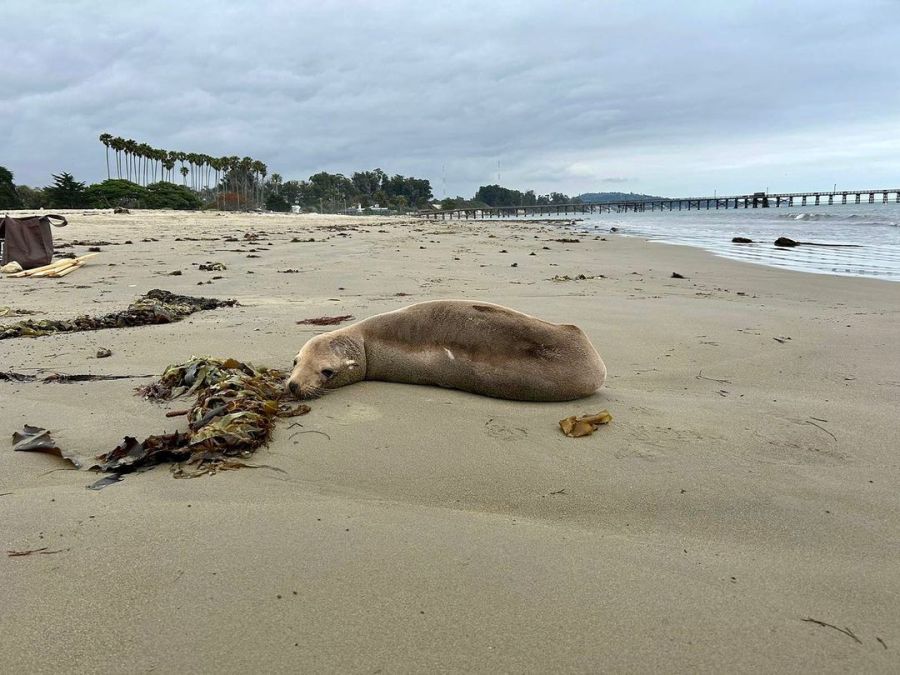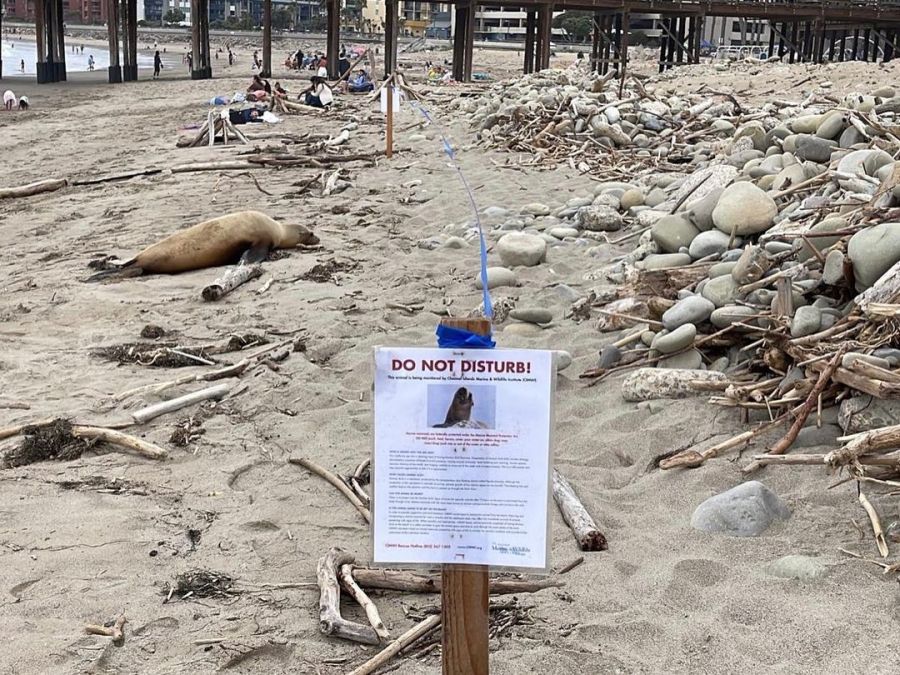Sickened marine mammals poisoned by an algal bloom in Southern California waters are overwhelming a local rescue organization.
Channel Islands Marine & Wildlife Institute responds to beached sea lions and other sick mammals, evaluates their condition and, if needed, attempts to nurse the animals back to health.
But a recent algal bloom off the coast of Southern California is leading to more and more marine mammals getting sickened by a type of poison that is growing ever more prevalent: domoic acid toxicity.
Known colloquially as the “Red Tide,” domoic acid is a naturally occuring neurotoxin that is produced by blooming algae in California waters. The blooms tend to happen more regularly in spring and autumn when nutrients from the deep are brought to the surface and exposed to sunlight.

Fish and other animals low on the food chain eat the toxic algae without much issue, but marine mammals and birds that eat those animals aren’t so lucky.
Through a process called “biomagnification,” seals, sea lions and other predators ingest large amounts of the poison by eating a large amount of small prey.
The poisoning can lead to marine mammals getting sick and grounding themselves on beaches as they experience lethargy, disorientation, vomiting and other serious medical complications.
When the animals get sickened, that’s when CIMWI and other wildlife rescue organizations jump into action.
But another recent algal bloom is spreading those resources thin.

CIMWI Executive Director Sam Dover told the Santa Barbara Independent that the nonprofit organization is “inundated” with reports of sick seal lions, seals and dolphins.
“We are receiving 30-60 calls per hour and responding to over 30 animals per day,” Dover said.
The National Oceanic and Atmospheric Administration has blamed harmful algae for the deaths of hundreds of sea lions and more than 60 dolphins in the first weeks of June alone.
When responders arrive to the beaches to find these sick animals, they’ll observe the symptoms and attempt to test them for domoic acid. Symptoms typically subside in about three days and many sea lions can bounce back and live normal lives, but others aren’t as lucky.
According to CIMWI’s website, ”The degree of impact that domoic acid has on a sea lion depends on the amount of contaminated fish they consume. Consuming too much of the contaminated prey could result in death.”
The neurotoxin can cause brain lesions and shrinking of the hippocampus, the part of the brain responsible for memory. If an animal’s brain is affected, little can be done in the way of treatment.
In addition to this recent outbreak, Southern California has seen harmful algal blooms five times in the last 20 years, including one of unprecedented severity last year. Like many of the issues plaguing the earth’s oceans, global climate change is believed to be a contributing factor.

As always, beachgoers are urged to keep a safe distance between marine mammals, which is federal law, and report any sick or distressed animals to a local rescue organization like CIMWI.





















